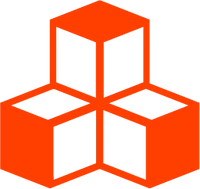Advanced
Migration Guide
Threlte 6 provides a much more mature and feature-rich APi and developer experience than its predecessor at the cost of a lot of breaking changes. This guide will help you migrate your Threlte 5 project to Threlte v6.
This document is a work in progress and will be updated up until the point of the first release of Threlte 6. There are probably more breaking changes than listed here. Your Editor will help you migrating with autocompletions and type checking.
Preprocessing
Preprocessing is not needed anymore starting from Threlte 6. This means you
may remove the preprocessor @threlte/preprocess from your project as well as its
configuration in svelte.config.js. You can now use the component <T> directly.
<Three> is now <T>
Threlte 6 merges the <Three> and <T> components into a single component. The property type was renamed to is
to also properly reflect the fact that it can be used with already instantiated objects.
@threlte/core is only about the <T> component
The @threlte/core package is now only about the <T> component. It does not provide any abstractions
that have been part of the core package before. Some of these abstractions (<TransformControls>,
<OrbitControls>, audio components and several hooks) have been moved to @threlte/extras as this is the new
home for commonly used abstractions.
Prop types
Threlte 6 heavily relies on prop types that Three.js naturally understands. As such, the prop types you may have
previously used to define for example the position of an object changed. Threlte v5 provided its own prop types
Position (e.g. { x, y, z }), Rotation and others which are now removed or deprecated. While not yet all
abstractions fully make use of the new prop types, we’re working on it. Your editor should be able to provide
you with the correct prop types for the components you’re using.
Interactivity
Interactivity is now handled by a plugin that’s available at @threlte/extras. It’s much more mature and flexible
in terms of event handling. For instance – as some of you requested – you may now define on what object the main
event listener is placed. Check out its documentation to learn more.
useLoader now returns a store
The hook useLoader now returns a custom Svelte store called
AsyncWritable. This store allows you to await
the loading of the resource while also implementing a regular Svelte store. It also now caches the results
of the loader function so that it’s not called multiple times for the same resource. You will most likely
benefit from quite a performance boost in applications that rely heavily on external resources.
useThrelteRoot has been removed
The hook useThrelteRoot has been removed and its properties have partially been merged into useThrelte as well as
a new internal context which is not exposed. All other contexts (which were used internally) have also been merged or removed.
<Pass> and the default effects rendering are removed
In the effort of clear separation of concerns, the component <Pass> as well as the rendering with Three.js default
EffectComposer have been removed. Threlte 6 now provides a hook called useRender which
allows you to easily set up sophisticated rendering pipelines. As soon as a useRender hook is implemented, Threlte’s
default render pipeline is disabled. useRender callbacks will be invoked after all callback to useFrame have been
invoked. This means that you can use useFrame to update your objects and useRender to render it. useRender also has the option of
ordering callbacks to orchestrate the rendering pipeline across multiple components.
Threlte’s main context types
Thelte’s main context contains Svelte stores. These stores are now a custom Threlte store called
CurrentWritable which is a store that contains a current value with
a reference to the current value of the store. This means it does not need to be unwrapped manually (and expensively!) in
non-reactive places such as loops. For instance, let’s have a look at its usage in the hook
useFrame where the context is available as the first argument
to the callback:
useFrame(({ camera, colorSpace }) => {
// instead of get(camera) we now can …
camera.current // THREE.Camera
colorSpace.current // THREE.ColorSpace
})The full type definition is currently listed here.
useGltfAnimations Signature
The signature of the hook useGltfAnimations has changed. It no longer provides a callback that is invoked
when the gltf store has been populated and the actions store has been set. This is because it with the option to set
a custom root for the THREE.AnimationAction, the callback could be triggered multiple times, leading to an
unpredictable behavior. You should reside to using the actions store returned from the hook instead.
const { actions } = useGltfAnimations(gltf)
// this animation will play when the gltf store has been populated
// and the actions store has been set, effectively replacing the
// callback.
$: $actions.Greet?.play()Check out the hooks documentation for more information.
@threlte/rapier
Transform props
In an effort to clearly separate concerns, the components <Collider>, <AutoColliders> and <RigidBody> no longer
offer transform props (position, rotation, scale and lookAt). Instead, you should wrap these components
in for instance <T.Group> components and apply transforms on these.
<Collider
position={[0, 1, 0]}
rotation={[0, 45 * DEG2RAD, 0]}
>
<T.Mesh>
<T.BoxBufferGeometry />
<T.MeshStandardMaterial />
</T.Mesh>
</Collider><T.Group
position={[0, 1, 0]}
rotation={[0, 45 * DEG2RAD, 0]}
>
<Collider>
<T.Mesh>
<T.BoxBufferGeometry />
<T.MeshStandardMaterial />
</T.Mesh>
</Collider>
</T.Group>